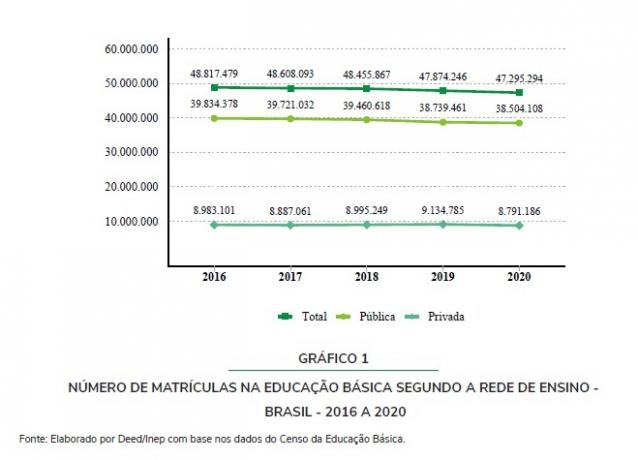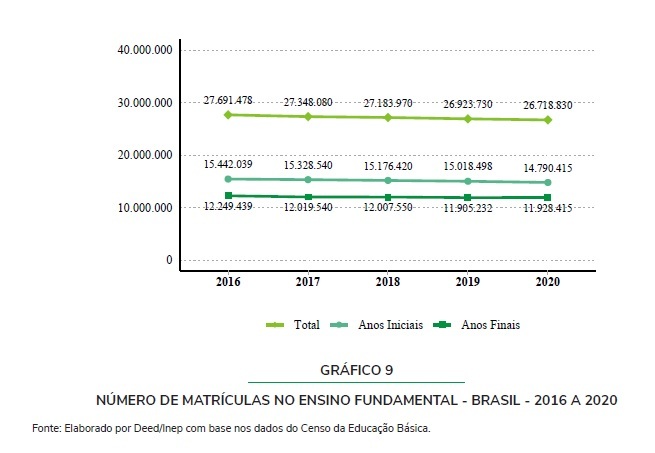Basic education (kindergarten, elementary, secondary and Youth and Adult Education - EJA) showed a drop in enrollments for the fourth consecutive year. The 2020 School Census of Basic Education released this Friday, January 29, found 47.3 million enrollments in basic education in 2020, approximately 579,000 less than in 2019.
See the result of the School Census 2020
The 2020 Basic Education School Census assessed the period from 2019 to March 2020, before schools closed because of the Covid-19 pandemic. Therefore, the data presented do not count with the impact of the absence of in-person classes for basic education.
Traditionally, the survey is closed in May, but Inep defined March 11, 2020 as a reference for being the last day of educational institutions opened in Brazil.
fall in recent years
If compared to the last four years (2016 to 2020), the reduction in the total number of enrollments in basic education was 1.5 million, that is, 3% less enrolled.

Kindergarten
After three years of high (8.4% high from 2016 to 2019), early childhood education decreased by 1.6% from 2019 to 2020. The drop was mainly driven by the lower number of students enrolled in private schools (6.9% in day care centers and 7.2% in pre-school).
Despite the general low in enrollment in early childhood education, the public network registered a slight increase of 0.5% in the number of enrolled. The 1.2% enrollment in preschool offset the 0.5% decrease in enrollment in public day care centers.
Do not stop now... There's more after the advertising ;)
Elementary School
Elementary education had 26.7 million students enrolled in 2020, 204,900 fewer students than in 2019. In comparison with the last four years, the drop in enrollments was 3.5%.
According to the Census, the drop in enrollments is greater in the initial years of elementary school (4.2%) against 2.6% in the final years.

High school
Contrary to previous phases, secondary education (in 2020) presented an increase of 1.1% of enrollments compared to 2019, registering 7.6 million enrollments.
The 2020 growth in secondary school enrollments interrupted the downward trend seen from 2016 to 2019 (8.2%).

professional education
Professional education continues to grow. From 2016 to 2019, the increase was 4.1% in enrollments. From 2019 to 2020, there was a high percentage of 1.1%, boosted by 65.5 thousand (10.5%) of enrollments in vocational education integrated with secondary education.
Despite the total growth, there was a drop of 2.7% in subsequent technical education and 6.3% in vocational education concurrently with secondary education.
Youth and Adult Education (EJA)
Youth and Adult Education (EJA) also registered a drop in enrollment. The decrease in enrollments was 8.3%, reaching 3 million students in 2020.

Age Distortion
The Census also brings the age distortion rate, that is, when the student is behind in school for his/her age. The survey found that the gap increases from the 3rd year of elementary school and intensifies in the 7th grade of elementary school and in the 1st year of high school.
The main cause of age distortion is student failure, which delays their academic trajectory. Regarding gender, the predominance is among men and, in the 6th grade of elementary school, this difference in distortion is accentuated (28.2% for males and 16.8% for females).
More information at Inep website.
